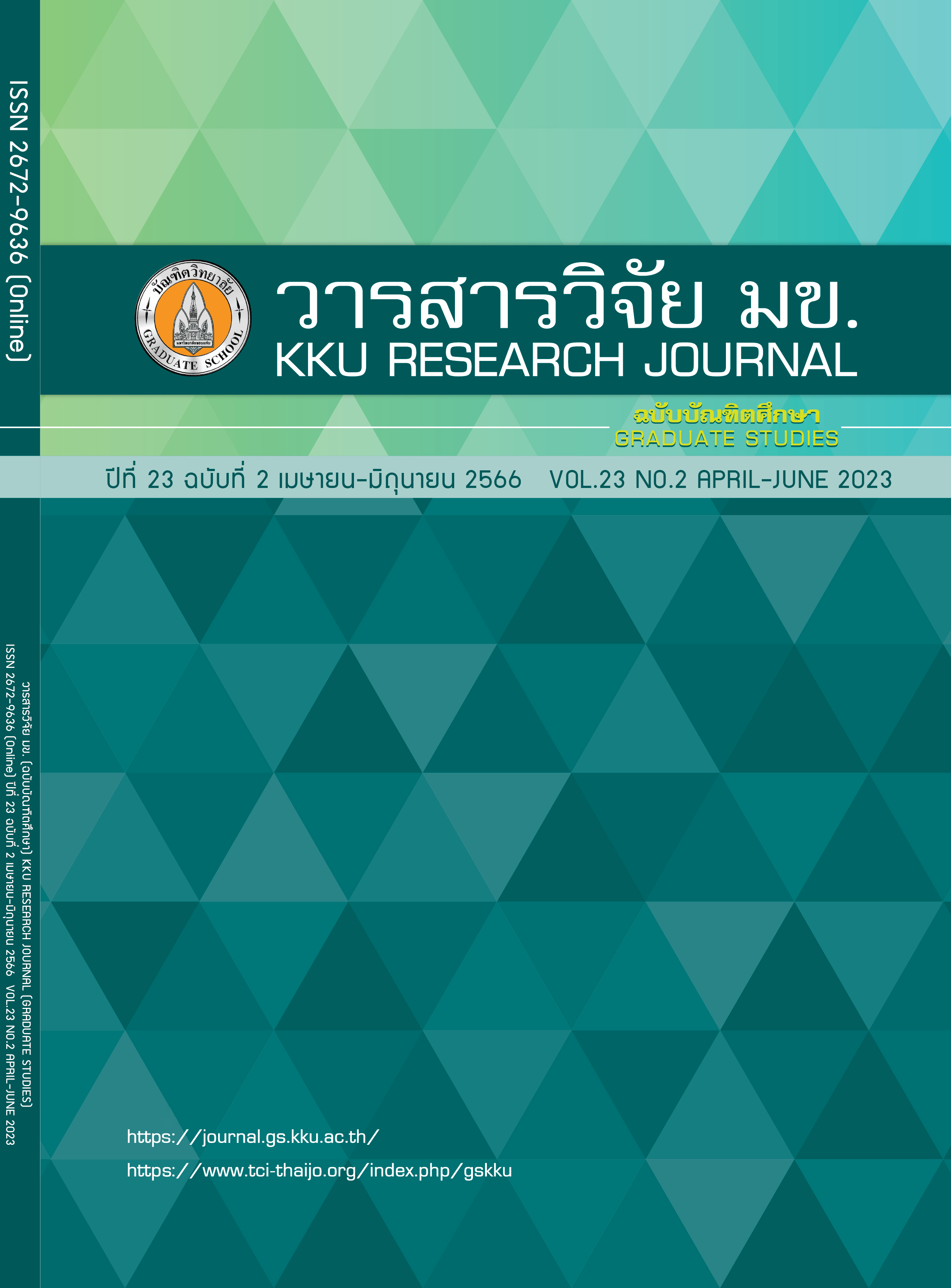The Opportunistic Red-Light Running Behavior of Motorcyclists
Keywords:
Red-light running, Vulnerable Road Users, Signalized IntersectionAbstract
Red-Lights Running (RLR) lead to serious intersection collisions. This is especially when a car runs a red light and opportunistic motorcycle riders early start and enter intersection before the light turns green. This study aimed to reveal factors influencing the Opportunistic Red-Light-Running behavior (OP) of the motorcyclists. In this study, video cameras were used to capture the crossing behavior of 2,681 motorcycle riders at 8 signalized intersections in Nakhon Ratchasima. The Binary Logit models were developed to reveal factors associated with OP. The results showed that 61% of red-light runners were opportunistic traffic violators. Logit model results revealed that male, riding the commercial motorcycles, parking above stop-line, having visual search strategies, being in the direction with countdown number display, having narrower crossing distances, and moving in the direction with higher differences in number of lanes, are factors that encourages OP. The results imply that OP is intentional violation. Therefore, behavioral change interventions should focus on rider intention by modifying the perceived benefit and risk of OP riders.
References
World Health Organization. GLOBAL STATUS REPORT ON ROAD SAFETY 2013.
World Health Organization. GLOBAL STATUS REPORT ON ROAD SAFETY 2015.
World Health Organization. GLOBAL STATUS REPORT ON ROAD SAFETY 2018.
Royal Thai Police. Statistics of road traffic accident cases Classified by the cause of the accident Throughout the Kingdom 2006 - 2015 [Internet]. 2015 [cited 2022 Apr 6]. Available from: http://service.nso.go.th/nso/web/statseries/statseries21.html. Thai.
National Safety Council Injury Facts. Fatal Crashes by crash type [Internet]. 2018 [cited 2022 Apr 6]. Available from: https://injuryfacts.nsc.org/motor-vehicle/overview/type-of-crash.
Palat B, Delhomme P. What factors can predict why drivers go through yellow traffic lights? An approach based on an extended Theory of Planned Behavior. Safety Science. 2012; 50(3): 408–417.
Jantosut P, Satiennam W, Satiennam T, Jaensirisak S. Behavioral Characteristics and Factors Associated to Red Light Running of Passenger Car Drivers in Khon Kaen City. KKU Research Journal (Graduate Studies). 2021; 21(1): 26–37.
Jantosut P, Satiennam W, Satiennam T, Jaensirisak S. Factors associated with the red-light running behavior characteristics of motorcyclists. IATSS Research. 2021; 45(2): 251–257.
Reason J. Human Error. Cambridge: Cambridge University Press; 1990
Wu C, Yao L, Zhang K. The red-light running behavior of electric bike riders and cyclists at urban intersections in China: An observational study. Accident Analysis and Prevention. 2012; 49: 186–192.
Pai CW, Jou RC. Cyclists’ red-light running behaviours: An examination of risk-taking, opportunistic, and law-obeying behaviours. Accident Analysis and Prevention. 2014; 62: 191–208.
Fraboni F, Marín Puchades V, de Angelis M, Pietrantoni L, Prati G. Red-light running behavior of cyclists in Italy: An observational study. Accident Analysis and Prevention. 2018; 120: 219–232.
Zhang Y, Wu C. The effects of sunshields on red light running behavior of cyclists and electric bike riders. Accident Analysis and Prevention. 2013; 52: 210–218.
Jensupakarn A, Kanitpong K. Influences of motorcycle rider and driver characteristics and road environment on red light running behavior at signalized intersections. Accident Analysis and Prevention. 2018; 113: 317–324.
Abdul Manan MM, Mohamad Khaidir N, Mohamed Jamil H. Factors associated with red-light running among motorcyclists at signalised junctions in Malaysia. Transportation Research Part F: Traffic Psychology and Behaviour. 2020; 73: 470–487.
Yan F, Li B, Zhang W, Hu G. Red-light running rates at five intersections by road user in Changsha, China: An observational study. Accident Analysis and Prevention. 2016; 95: 381–386.
Zhang F, Ji Y, Lv H, Ma X. Analysis of factors influencing delivery e-bikes’ red-light running behavior: A correlated mixed binary logit approach. Accident Analysis and Prevention. 2021; 152.
Pathivada BK, Perumal V. Analyzing dilemma driver behavior at signalized intersection under mixed traffic conditions. Transportation Research Part F: Traffic Psychology and Behaviour. 2019; 60: 111–120.
Zhang X, Guozhong MA, Bin C. THE ANALYSIS OF THE EFFECT OF RED LIGHT SIGNAL COUNTDOWN DEVICE ON INTERSECTION SAFETY. 2009.
Sharma A, Vanajakshi L, Girish V, Harshitha MS. Impact of signal timing information on safety and efficiency of signalized intersections. Journal of Transportation Engineering. 2012; 138(4): 467–478.
Hair JF, Black WC, Babin BJ, Anderson RE. MULTIVARIATE DATA ANALYSIS EIGHTH EDITION [Internet]. 2019. Available from: www.cengage.com/highered
Dill J, Monsere C, McNeil N, Evaluation of bike boxes at signalized intersections. Accident Analysis and Prevention. 2012; 44(1): 126-134.
Papakostopoulos V, Nathanael D. The Complex Interrelationship of Work-Related Factors UnderlyingRisky Driving Behavior of Food Delivery Riders in Athens Greece. Safety and Health at Work. 2021; 12(2): 147-153.
Downloads
Published
Issue
Section
License
Copyright (c) 2023 KKU Research Journal (Graduate Studies)

This work is licensed under a Creative Commons Attribution-NonCommercial-NoDerivatives 4.0 International License.



